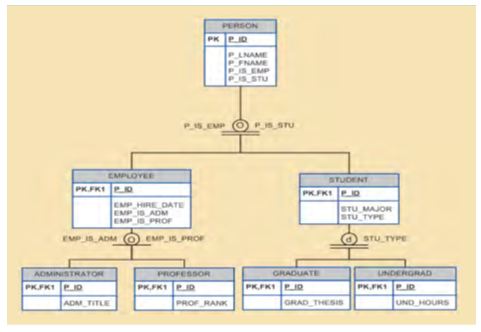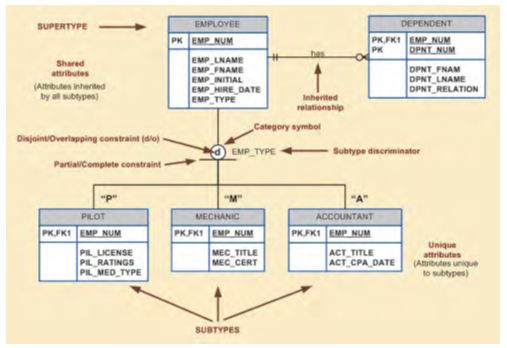Completeness Constraint
The completeness constraint specifies whether each entity supertype occurrence must also be a member of at least one subtype. The completeness constraint can be partial or total.
Partial completeness (symbolized by a circle over a single line) means that not every supertype occurrence is a member of a subtype; that is, there may be some supertype occurrences that are not members of any subtype.
A single horizontal line under the circle represents a partial completeness constraint. For example consider the following figure
Total completeness (symbolized by a circle over a double line) means that every supertype occurrence must be a member of at least one subtype.
A double horizontal line under the circle represents a total completeness constraint. Consider the following diagram.

Given the disjoint/overlapping subtypes and completeness constraints, it’s possible to have the specialization hierarchy constraint scenarios shown in the following Table
You May Also Like:



